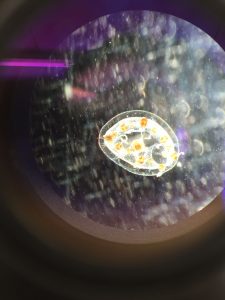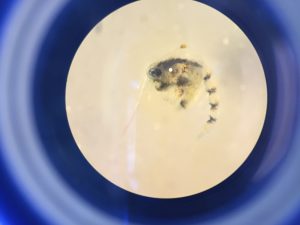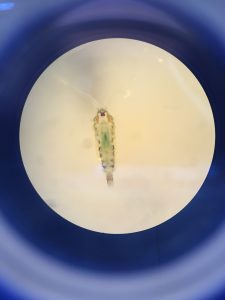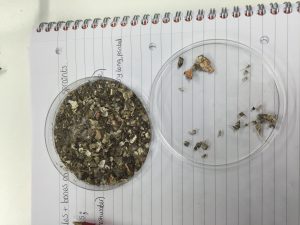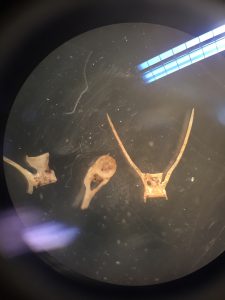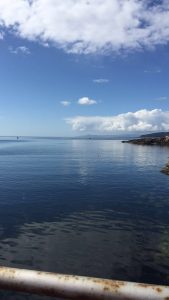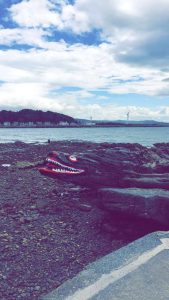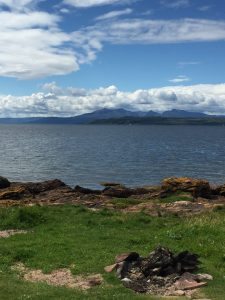
31/07/2017-04/08/2017 Marine Microbiology
It was a typical rainy Monday when I arrived in Largs and boarded the ferry over to Cumbrae to spend two weeks on the lovely island. The lab we worked in for the first week was armed with; microscopes, lab coats and petri dishes filled with agar. The first day we were straight out collecting water samples along Kames Bay and Newtown Bay. After filtering these samples and culturing on agar we could count and identify bacteria colonies that grew. Thankfully the samples from that day passed all tests with flying colours, making it safe to bathe in!
Collecting water samples from the deep sea whilst out on the boat was another fantastic experience. Special bottles strapped onto a line collected samples at all different depths. Light recording equipment was used to show the relationship between contents of water samples and the light availability at these depths. We could collect phytoplankton and zooplankton samples by slowly pulling two different sized plankton nets along behind the boat.
When looking at a drop of the ocean (literally!) you realise the volume of life that they actually support, beginning on a microscopic level. The waters around Cumbrae are teaming with beautiful looking zooplankton. Jellyfish and crab larvae, all at different stages of growth, looked incredible under the microscope. I found a Copepod with a glowing ruby red eyespot, this creature will remain planktonic in size for life.
A topic that fascinated me greatly was Biofouling and the continuous developments in this field. We had the opportunity to test several substances on how effective they are at preventing biofilms forming. This course teaches you so much about microbiology and finishes up by teaching about the future of microbiology and what jobs are available in the sector. Well worth it!
05/08/2017-11/08/2017 Marine Mammals and Birds
To begin our study into the mammals and birds found along the coast we dived straight in… to delving around in Otter spraint (poo!). Finding bones, feathers and even fish scales informed us of the species that the resident Otter was feeding on, extremely interesting.
What better way to learn about mammal and bird surveying than being out on a boat actually mammal and bird surveying! The birds we surveyed were plentiful; Gannets diving, Manx Shearwater gliding above the waves and Guillemots sat bobbing on the water.
The cetaceans were also present but less varied in species, the Common Dolphin was a favourite and many Harbour Porpoise could be glimpsed, their dorsal fin quickly breaking the water then disappearing silently. Cumbrae is lucky enough however to regularly have Minke Whales and Basking Sharks visiting so another trip during warmer waters is a must!
As well as spotting these amazing creatures we learnt the processes of focal and scan sampling and collected true data to analyse back in the lab and input onto recording sites.
We covered topics such as oceanography and acoustics that were fascinating and created a broader understanding when we looked at marine mammal behaviour. Another boat trip took us over to Little Cumbrae to observe the seal behaviour during haul out. These beautiful animals were a pleasure to watch, the Harbour Seals were the predominant species observed with a few Grey Seals mixed in.
Cumbrae
Scotland’s most accessible island is definitely worth a visit! Whilst there I hired a bike for very cheap from Millport town, then cycled the 10 mile road around the island. This ride is flat and very easy for everyone to do. Along the west coast of the island are many beautiful beaches and with bicycles being the main form of transport on this part of the road, it is very peaceful. I also walked up to Glaid Stone point which gave stunning 360° views of Cumbrae and its surroundings. The walk had some steeper but manageable roads to climb, but the view point is also accessible by car.

